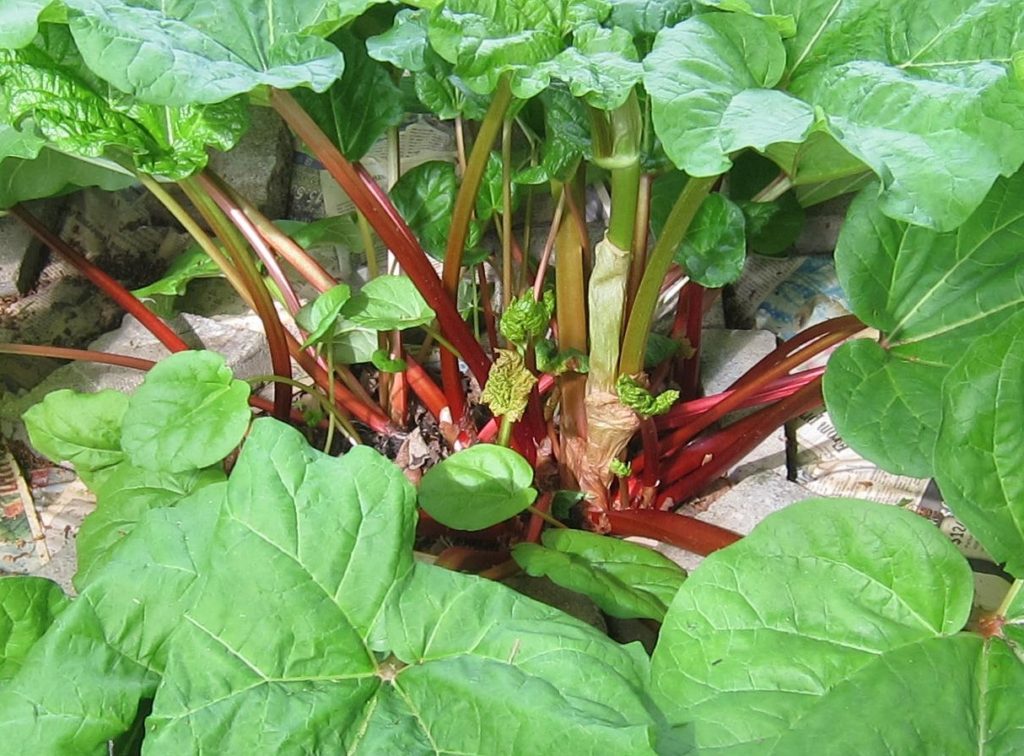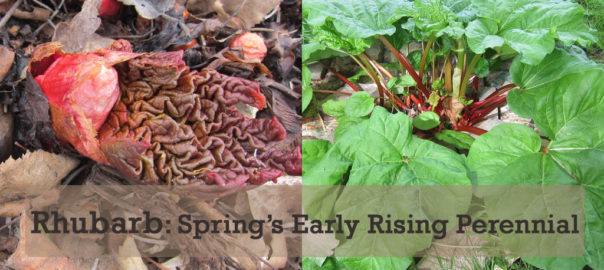Winters in Alaska are long, cold & dark. At the end of December, most Alaskans only see 5-6 hours of sun each day. By March, the daylight hours have made significant enough gains for Alaskans to start looking forward to summer months in the land of the midnight sun.
In Alaska, one of the surest signs that spring has officially sprung is the sight of rhubarb’s annual crowning from the barely-thawed earth.
As soon as the snow has melted, still weeks before Alaska’s safe garden planting date, spring rhubarb begins to emerge.

Rhubarb is an edible perennial plant that grows extremely well throughout much of Alaska. ‘Perennial’ means it comes back every year (with proper care, of course), unlike most garden vegetables that need to be replanted each spring then die off in the fall.
When rhubarb grows up from the ground after a long winter, it looks pretty funky. First it pops out a hard, dark red head. Then it pushes out its first leaf, in the form of an odd-shaped ball of wrinkles.
Wait for more leaves before harvesting…
Before long, more & more leaves push their way up from the ground, stems grow thicker and longer, and the leaves turn green.

Once there are multiple large stalks, it’s ready to start harvesting bit by bit for the season, as needed. A mature rhubarb plant that’s a few years old can be safely harvested from spring to fall as it continues to grow.
Only rhubarb’s stalk is eaten – not the leaves.
When pulling rhubarb stalks for mixed home grown fruit pies & muffins, I cut the large rhubarb leaves off of the stalk and toss them directly into my large outdoor compost.
A well-placed rhubarb can live for years & years with minimal maintenance, making it a fantastic option for an edible perennial in Alaska.
